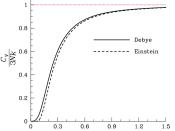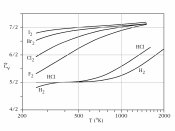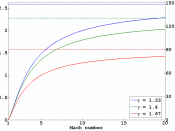Thermochemistry is the application of thermodynamics to chemistry.
Thermochemistry is used to predict the energy exchanges that occur in the following processes:
1. chemical reactions
2. phase changes such as boiling and melting
3. the formation of solutions
Thermochemistry is primarily concerned with the following state functions defined in thermodynamics:
Internal energy (U)
Enthalpy (H).
Entropy (S)
Gibbs free energy (G)
Most identities in Thermochemistry arise from application of the first law of thermodynamics, the Law of Conservation of Energy, to these state function.
In chemical reactions, bonds are broken and reformed, and heat may be given off or taken up in such processes. Since reactions are often carried out at constant pressure, the change in enthalpy is the appropriate measure of heat given off or absorbed.
Laws of Thermochemistry
1. The magnitude of H is directly proportional to the amount of reactant or product.
-Thus H can be used as a conversion factor in a balanced equation to obtain amounts of reactant/product or H itself.
(mole to mole ratio's).
2. H for a reaction is equal in magnitude but opposite in sign to H for the reverse reaction.
Heats of Formation
Molar heat of formation ( Hf) is equal to the enthalpy change, H when one mole of the compound is formed from the elements in their stable forms at 25oC and 1 atm is Ho (pronounced 'delta h naught'). Ho of a solution is of a 1M solution, at 1 atm and 25 oC.
Heats of formation are usually negative quantities.
Heat is a way of transferring energy between a system and its surroundings that often, but not always, changes the temperature of the system. Heat is not conserved, it can be either created or destroyed. In the metric system, heat is measured in units of calories,


